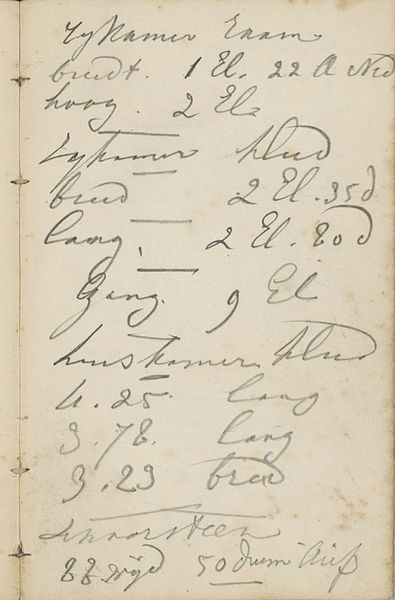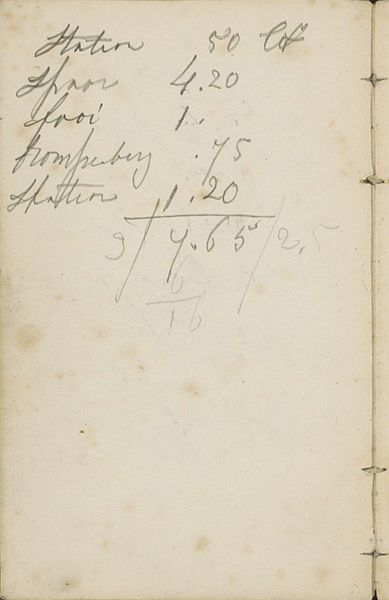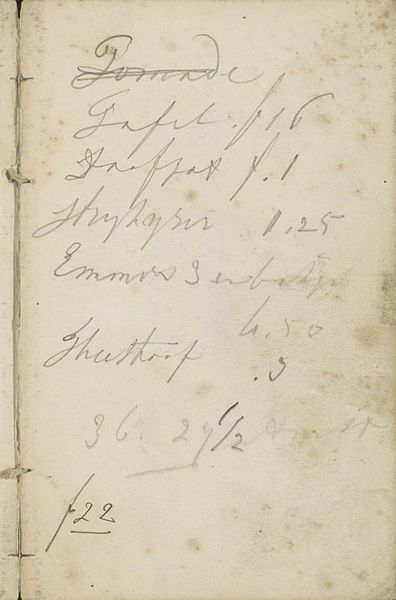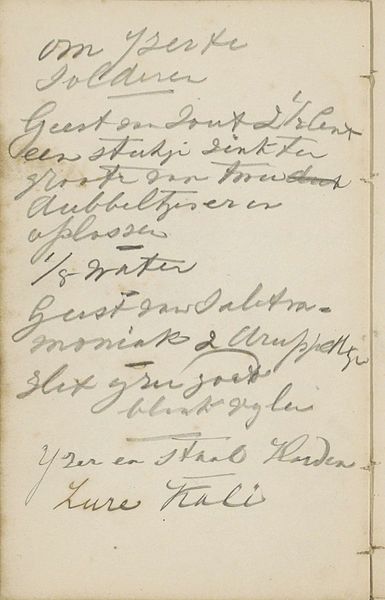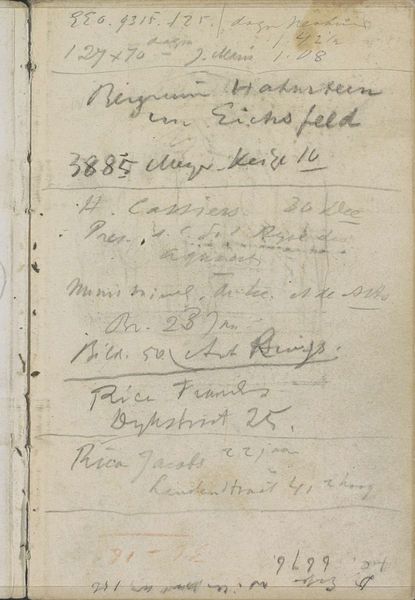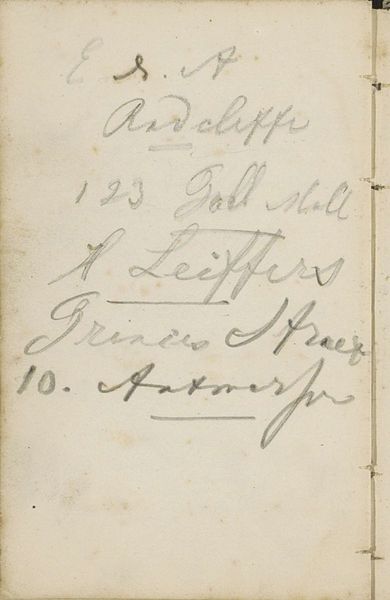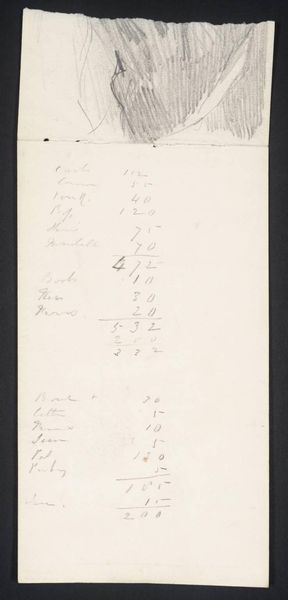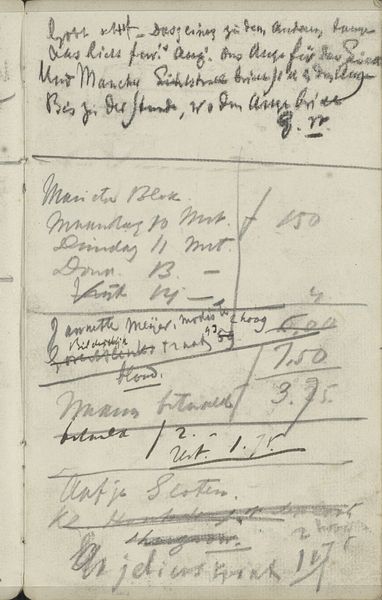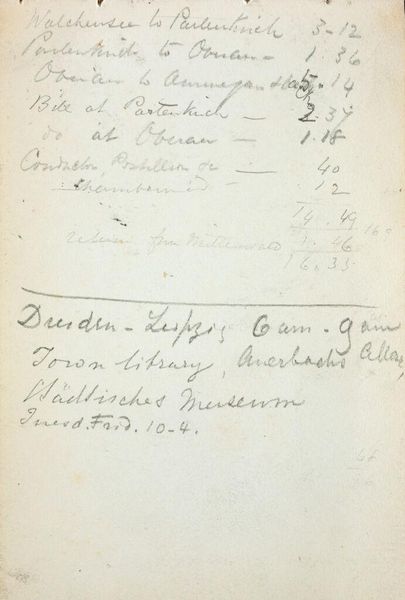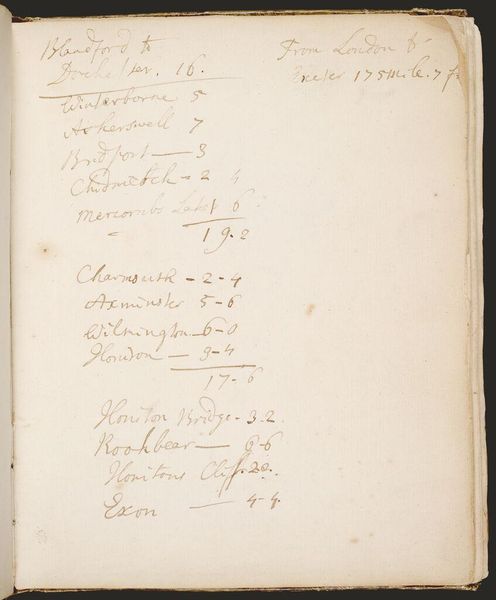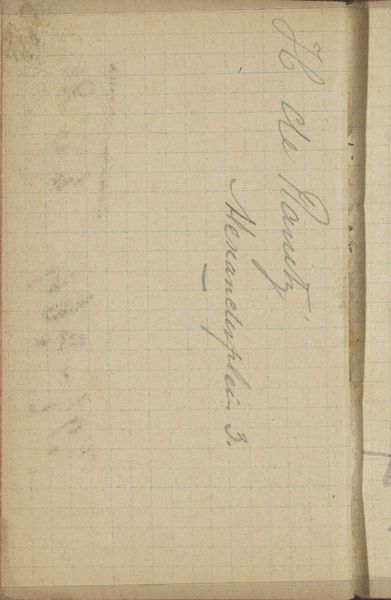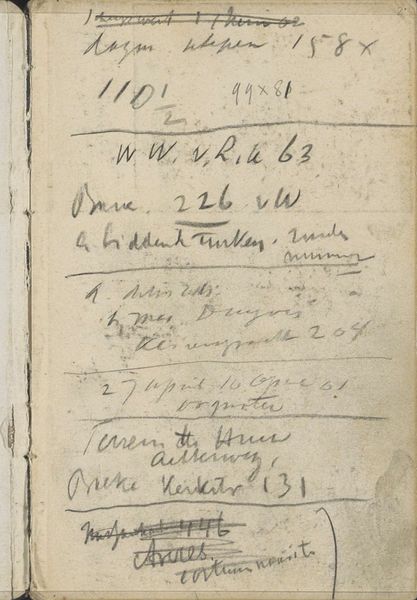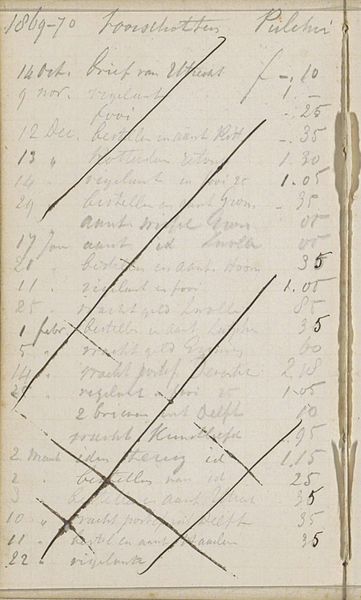
#
hand written
#
script typography
#
hand-lettering
#
hand drawn type
#
hand lettering
#
personal sketchbook
#
hand-written
#
hand-drawn typeface
#
fading type
#
small lettering
Copyright: Rijks Museum: Open Domain
Curator: This page, titled "Afmetingen van kamers," or "Dimensions of Rooms," comes to us from the sketchbook of Willem Koekkoek, likely spanning the years 1849 to 1895. It's currently held here at the Rijksmuseum. My immediate impression is of a rather unassuming object. It feels almost…private. Editor: The paper, aged and textured, hints at a life lived alongside its creator. The grey of the handwritten entries contrast with the off-white, hinting at a simple process of notation using perhaps a simple stylus or early graphite pencil, almost devoid of decoration. Curator: Indeed. It’s the intimate scale and personal nature of the hand-lettering that I find compelling. The varying script styles, some words underlined for emphasis, reveals not just measurements, but a specific intention in the recording. Observe how some entries fade, suggesting revisions or the passage of time impacting the inscription itself. It is self-referential as text. Editor: Right. These notations, “hoog” – height – “bred” – width – it's fascinating to see a direct record of the labor involved in the making or planning of architectural space, made more potent due to the time elapsed, creating an unintentionally expressive surface. It provides a tangible connection to the historical material conditions. It's not about the ideal space, but its factual construction. Curator: Absolutely. Furthermore, consider how these aren’t just simple measurements but function almost as coordinates within a life’s artistic pursuit. There’s a harmony to the composition – the numerical and linguistic scripts interwoven creating a balance upon the paper surface. Editor: I find myself considering the unseen hands shaping the world this page describes; the skilled labor hidden behind seemingly simple construction, but that labor created the literal foundations of human existence: home. It grounds the sublime into something very, very pragmatic and connected to working realities. Curator: That's an important element: the transformation from simple utility to considered aesthetics, achieved not through ornamentation, but sheer honesty and raw use within daily applications. Editor: Exactly. I am still struck by the beauty found in its very transience of both process and intent – a quiet memorial to how something is made, materially and through physical application and engagement. Curator: Well, I am drawn by the intimate peek into the hand of the artist thinking and creating space, that speaks powerfully across the decades since it was put on paper.
Comments
No comments
Be the first to comment and join the conversation on the ultimate creative platform.
